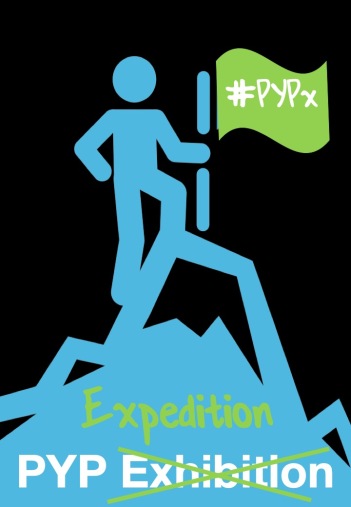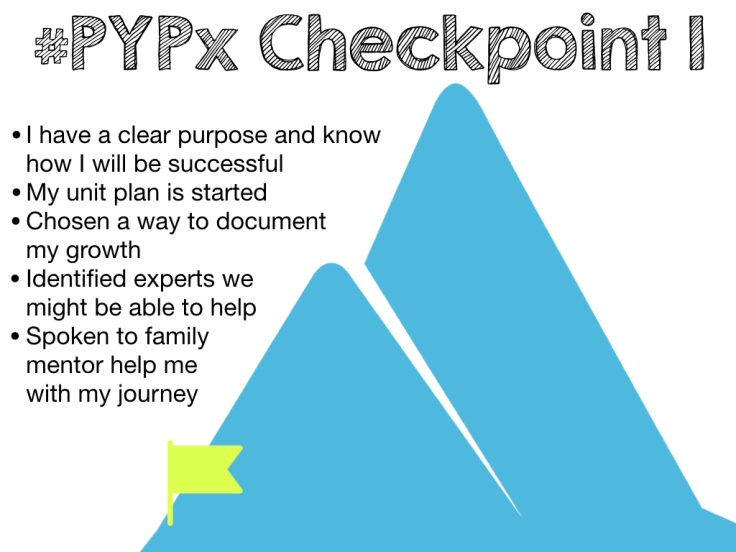After a few years of acting as a PYP mentor, this year I find myself working with our Year 6 team on exhibition. Over the next few weeks as part of our exhibition, I will try to document our journey.
The Year 6 team identified that for an exhibition to be powerful, it needs to be authentic, meaningful and above challenging for our learners. We also identified problems in the past.
- Too much of a focus on coming up with a ‘finished product’ at the expense of the learning process. The ability of learners to have multiple attempts was something important to us.
- Too much time was spent wordsmithing central ideas and lines of inquiry to parrot back at the end of the process was getting in the way of learning.
- Learners were put into teacher-directed teams and given teacher-assigned mentors that were necessarily relevant to their learning.
- Mentors spending a lot of time having to get the children to bring them up to speed before the children can utilise their expertise.
- Actions children take during the exhibition are not sustained after the exhibition is over.
What’s in a name – more than you think!
We’re going on an…. expedition? When we looked at our central idea ‘individual grow by challenging their personal limits’ we realised that the term exhibition didn’t really fit. When the teachers thought about how personal limits are challenged we noticed
- that once a limit is successfully challenged, we need to look to the next peak in order to grow.
- that behind every individual success was a team of people that helped along the way.
- that every ‘mountain of success’ has peaks and valleys.

The name change might seem semantic but we felt it was important to signal to our community that we were looking to shift our thinking around the culmination of the PYP programme at our school.
Children quickly learn the game of ‘exhibition.’
A highlight of the exhibition for learners is that the community, their parents, children from other grades and schools, view their learning. However, this level of attention is a double-edged sword. While a bigger audience gives a heightened sense of purpose, children (and, in some cases, parents) put pressure on themselves to perform based on prior experiences of viewing an exhibition. However, this means that the process of learning is not authentic to the child because they are merely seeking to emulate the work of others.
We borrowed from the work of @orenjibuta to look at areas that learners might have a passion to explore with.

We also challenged our learner to think of skills and passions in terms of level of confidence and relevance to them as a learner. The expedition sweet spot is to find an area with a high challenge but also relevance for them as a learner.

In general, the learners who faced a struggle with an aspect of school didn’t have much trouble identifying a limit to challenge (even if the area wasn’t an explicit focus of the expedition) Meanwhile, many of our more successful learners had trouble finding a limit to challenge.
One child, who identified verbal communication as an area for development, decided his plan was to create a jar with debate topics on slips of paper for audience members to practice was expedition seemed genuinely perplexed that he might need to master the activities he wished to showcase with the community. Meanwhile, another was grasping at a way to ‘research project’ his areas for development rather than looking for opportunities to put himself in situations where he might need to practice skills. These problems highlight how easy it is for schools to get stuck in the mould of ‘learning about’ topics rather than connecting learning experiences to our curriculum.
One way we sought to help learners to make links to the challenge they were grappling with and our curriculum is through getting them to plan their own unit. Rather than reinvent the wheel, weused a planning document from @makinggoodhumans. While the learner’s purpose might not change much over time, it is likely this document will change.
We also only had one iTime action carry through into expedition. We had so many amazing actions had taken place this year:
- a group that set sold juice to people who bought in their cups to highlight the use of packaging waste.
- a gender equality action where only males in the community were asked to donate cash when they made purchases at the canteen.
- a ‘Theatre Tuesday’ group that organised screenings of online movies and sold snacks during lunch.
- a learner-led talent show with prizes and the proceeds going to charity.
- learner-led sports competitions and dance clubs
A challenge for us next year is to sustain this action through the year rather than so much interest and passion fading away because it’s ‘exhibition time.’
Re-Thinking Support
In the past learners were put into groups and assigned mentors by homeroom teachers.
We saw our learner as being at the centre of a network of people to support their learning and we wanted our learner to do some of the heavy lifting of connecting with these experts. 
We sent out a Google slide to collect expertise around our school. We had over 40 staff members sign up, including classroom assistants, parents and members of our non-teaching staff.

We then published this on a wall for our learners to find people with relevant skills to the areas of passion they needed help with.

The expert wall has several advantages over the traditional mentor:
- The children are doing the work of finding experts relevant to their interests.
- The commitment of the adult is based on need and availability rather than being locked into a weekly meeting over a number of weeks.
- Children can connect with more than one expert.
We also asked that a children family member that could act as a mentor. We suggested that the children might want to contact a member of their extended family, in particular grandparents who might be living abroad as a way to bridge the distance gap we face in international schools. To support our mentors we prepared a ‘cheat sheet’ based on the GROW model of coaching to help the mentors support our learners. We sent this out to both learners and parents to help them.

Re-thinking homerooms
Once the children had been through the process of identifying areas of focus, the homeroom teachers sat down and looked at areas where there might be support and became the support teacher for those group of learners.
The learners are still not in formal ‘groups’ but we are creating conditions where children may find themselves with children that might have similar needs than their own.
The connections are not always so obvious. One learner found that the advice she was giving another child to develop his public speaking skills could equally apply to her journey to overcome her mathsphobia!
Teachers modelling the learning process
As part of the expedition, the teachers in Year 6 have all picked a limit for us to challenge – drawing and notetaking, improving physical flexibility, reading more fiction. Adults working on the unit models to children:
- That learning is lifelong
- That the supports put in place aren’t just ‘busy work’ for school but a way of thinking about a problem.
- That we need to reach out to others to help us improve.
- Modelling setbacks.
The pressure of the ‘wow’ factor
What’s this all going to look like?
The short answer right now is we don’t know.
A challenge for our community going forward will be to keep the focus on the learning and worry about the sharing when we have made our way a bit further up the mountain.


Thanks! Great perspective!
LikeLike